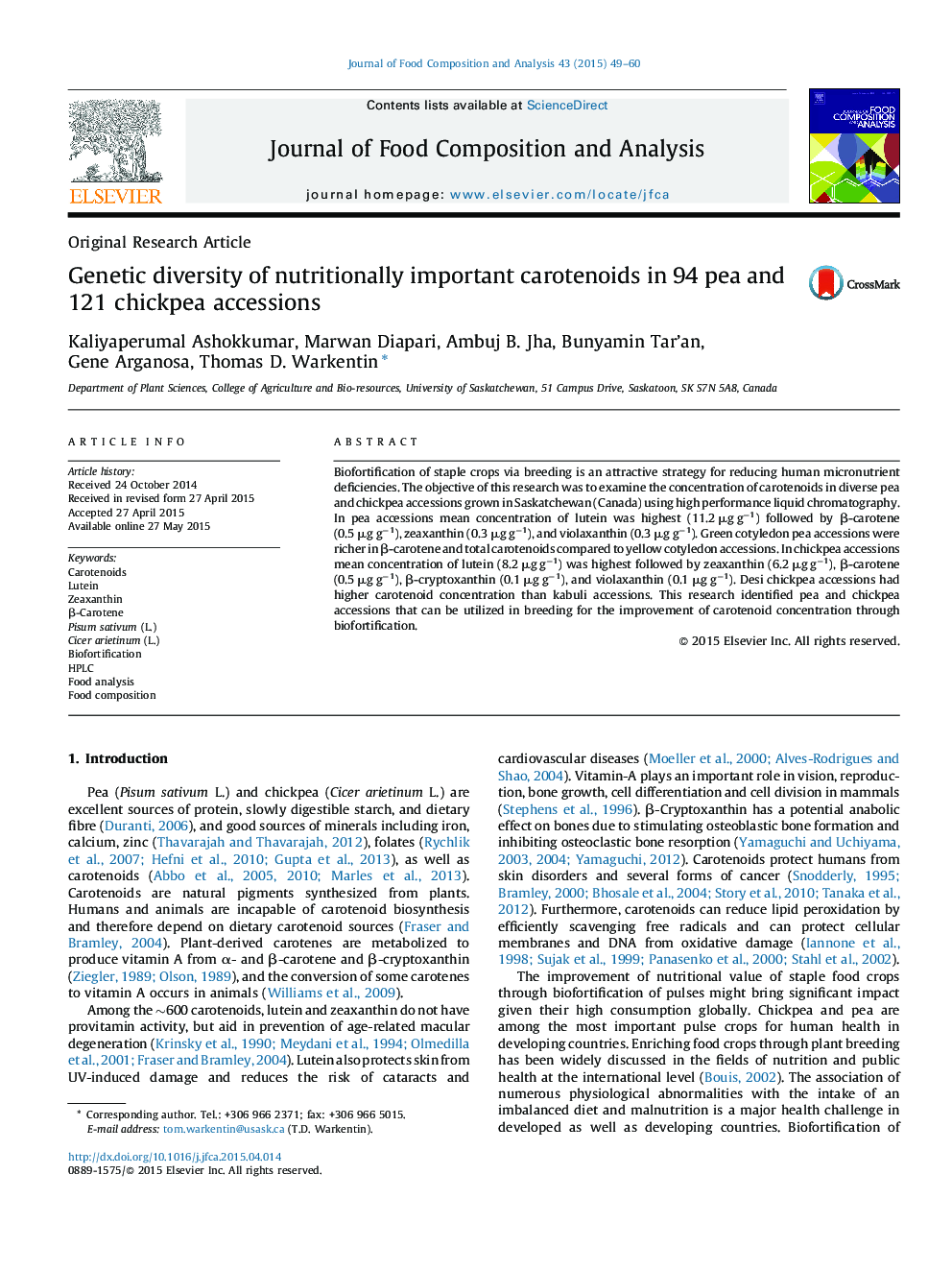| Article ID | Journal | Published Year | Pages | File Type |
|---|---|---|---|---|
| 1218074 | Journal of Food Composition and Analysis | 2015 | 12 Pages |
•The carotenoid profile of a diverse set of pea and chickpea accessions is described.•Pea accessions were richest in lutein followed by β-carotene.•Chickpea accessions were richest in lutein followed by zeaxanthin.•Pea and chickpea richer in carotenoids than rice, wheat, potato, banana, cassava.•Findings will contribute towards biofortification of pea and chickpea crops.
Biofortification of staple crops via breeding is an attractive strategy for reducing human micronutrient deficiencies. The objective of this research was to examine the concentration of carotenoids in diverse pea and chickpea accessions grown in Saskatchewan (Canada) using high performance liquid chromatography. In pea accessions mean concentration of lutein was highest (11.2 μg g−1) followed by β-carotene (0.5 μg g−1), zeaxanthin (0.3 μg g−1), and violaxanthin (0.3 μg g−1). Green cotyledon pea accessions were richer in β-carotene and total carotenoids compared to yellow cotyledon accessions. In chickpea accessions mean concentration of lutein (8.2 μg g−1) was highest followed by zeaxanthin (6.2 μg g−1), β-carotene (0.5 μg g−1), β-cryptoxanthin (0.1 μg g−1), and violaxanthin (0.1 μg g−1). Desi chickpea accessions had higher carotenoid concentration than kabuli accessions. This research identified pea and chickpea accessions that can be utilized in breeding for the improvement of carotenoid concentration through biofortification.
